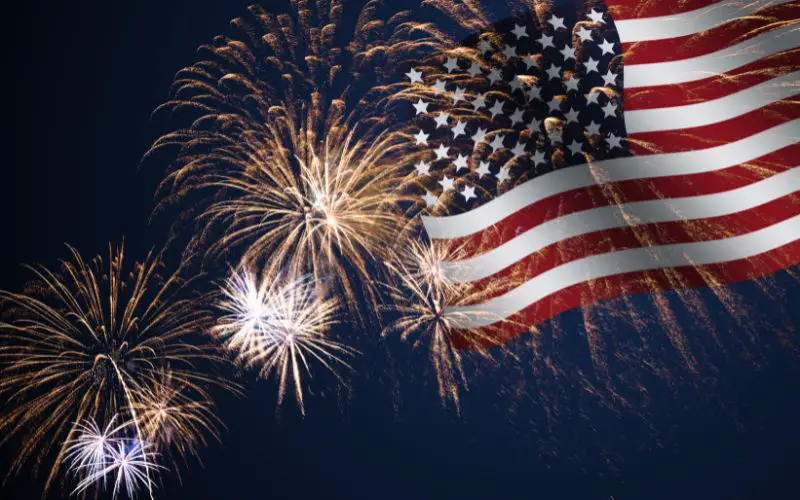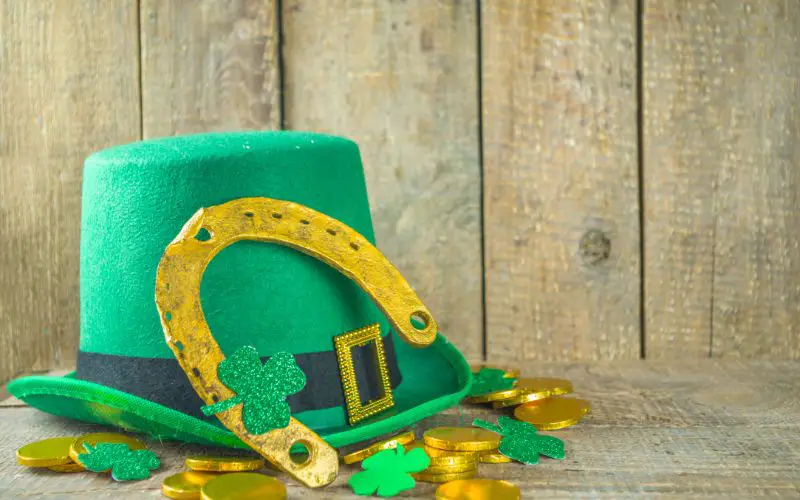
Each Holiday we celebrate in the U.S. has a much deeper history of fun facts associated to them. These interesting insights are the reasons why in many cases, we celebrate these holidays in the first place. The following list contains 50 unique holiday fun facts from the 10 major U.S. holidays. These fun facts are a perfect topic of conversation at any holiday celebration.
From Thanksgiving to Independence Day, each holiday has their own unique and interesting fun facts. Read on to see 50 unique fun facts from every major holiday. Many of these you have likely never known or heard of before. Use them to learn some new trivia facts alone or to share with some family and friends.
Contents
| 50 Unique Major Holiday Fun Facts 1. Christmas 2. Thanksgiving 3. Mother’s Day 4. Easter 5. Independence Day 6. Halloween 7. Father’s Day 8. Valentine’s Day 9. Saint Patrick’s Day 10. New Year’s Day |
The List of 50 Unique Fun Facts from the 10 Major Holidays
1. Christmas
Date: December 25

1. Hypotheses regarding Jesus’ date of birth have varied, and in the early fourth century, the church decided on December 25, which is also the date of the winter solstice on the Roman calendar.
2. In Austria, Switzerland, Croatia, Portugal, and quite a few other European countries, the traditional Christmas gift-bringer is the Christkind, which is the child Jesus.
3. Saint Nicholas is the patron saint of many different types of people and had a legendary habit of secret gift-giving, which gave rise to the traditional model of Santa Claus.
4. The English word “Christmas” is an abbreviated form of “Christ’s Mass”, with the word recorded in 1038 as Crīstesmæsse; “Crīst” comes from the Greek word Khrīstos (Christ) and “mæsse” is from the Latin word missa (celebration of the Eucharist).
5. Christmas was banned in Puritan England, and would not be restored as a legal holiday until 1660, as the day was associated with drunkenness and other misbehavior.
2. Thanksgiving
Date: Thursday November 22–28

6. Thanksgiving is a not only a national holiday celebrated in the United States, but in many other countries as well, such as Canada, Grenada, Saint Lucia, and Liberia.
7. Days of thanksgiving were important during the English Reformation, but before 1536 there were 95 Church holidays, plus 52 Sundays, when people were required to attend church; the Church of England reforms would reduce the holidays to 27.
8. In 1621, prompted by a good harvest, the Pilgrims celebrated with the Wampanoags Native American tribe, who had helped them get through the previous winter by giving them food; this event gave birth to the current Thanksgiving holiday tradition.
9. The celebration of the Thanksgiving holiday has been acknowledged by state legislation since the Founding Fathers of the United States, a presidential proclamation since 1863, and a federal legislation since 1941.
10. The Macy’s Thanksgiving Day Parade is almost 100 years old, with the first Macy’s Thanksgiving Day Parade taking place in New York City, in 1924.
3. Mother’s Day
Date: Sunday May 8–14

11. Anna Jarvis organized the first Mother’s Day service of worship and celebration at Andrews Methodist Episcopal Church in 1907 Grafton, West Virginia, which still serves as the International Mother’s Day Shrine today.
12. Ann Jarvis was a peace activist who had been urging for the creation of a “Mother’s Day For Peace” 40 years before it became an official holiday, which called upon mothers of all nationalities to band together to promote amicable settlement in the general interests of peace.
13. The U.S. Congress rejected a proposal to make Mother’s Day an official holiday in 1908, jokingly stating they would then have to create a “Mother-in-law’s Day” as well.
14. Jarvis’ home state of West Virginia, would officially observe Mother’s Day in 1910 and by 1911 all U.S. states would observe Mother’s Day, with some even officially recognizing the day as a local holiday.
15. Jarvis would become resentful of the commercialization of the holiday and at a 1925 American War Mothers group meeting where they been were selling carnations to raise money, Jarvis would be arrested for disturbing the peace while protesting the activity.
Read More Fun Facts
Learn more fun facts with Trivia Mastermind content.
4. Easter
Date: Sunday March 22 – April 25

16. Easter and its related holidays do not fall on a fixed date; they are moveable feasts based on a lunisolar calendar, falling on the first Sunday after the ecclesiastical full moon that occurs on or soonest after March 21.
17. The English term for “Easter” is derived from the Saxon spring festival Ēostre, which is a West Germanic spring goddess, and the namesake of the festival of Easter.
18. The Easter lily traditionally decorates the chancel area of churches on Easter because it is a symbol of the resurrection in Western Christianity.
19. In German Lutheran folklore, the Easter Bunny originally played the role of a judge of well behaved or disobedient children, bringing eggs, candy, and toys to the “good” children.
20. Egg hunting as an Easter game originally used real dyed eggs, with the practice of using plastic candy filled toys originating from many abstaining from candy during lent, and consuming them after the hunt.
5. Independence Day
Date: July 4

21. Historians have long disputed whether members of Congress signed the Declaration of Independence on July 4 and most have concluded that the Declaration was signed nearly a month after its adoption, on August 2, 1776.
22. Thomas Jefferson and John Adams were both signers of the Declaration of Independence who would also serve as presidents of the United States; both would also die July 4, 1826, the 50th anniversary of the signing of the Declaration of Independence.
23. Macy’s New York City fireworks display is the largest in the country, exploding more than 22 tons of pyrotechnics over the East River for each annual show.
24. The Philippines celebrates July 4 as its Republic Day, the day the United States officially recognized Philippine Independence and ceased to be a U.S. territory.
25. On July 4, 1777 in Bristol, Rhode Island, thirteen gunshots were fired in salute to American Independence, both in the morning and again in the evening, while in Philadelphia, an official dinner for the Continental Congress presided, which included fireworks, music, and a feast.
6. Halloween
Date: October 31

26. Halloween is a contraction of “All Hallows’ evening” and it is less commonly known as All Hallows’ Eve, All Saints’ Eve, or Allhalloween.
27. Halloween begins the observance of Allhallowtide which is the time in the liturgical year that is dedicated to remembering the death of saints, martyrs, and all the deceased.
28. Some historians have suggested that the pagan rooted Gaelic festival of Samhain may have been Christianized as All Hallow’s Day by the early Church.
29. Souling was an English festival that involved groups of people visiting local farms and cottages singing a request for apples, ale, and soul cakes, which were small baked cakes that were traditionally given to Soulers.
30. Soulers would visit houses dressed as ghosts with candle lit, hollowed-out turnip lanterns, meant to represent a soul trapped in purgatory.
Play Trivia!
Challenge yourself and play trivia questions with answers and explanations.
7. Father’s Day
Date: Sunday June 15–21

31. The Eastern Orthodox Church has named the second Sunday before Nativity as the Sunday of the Forefathers to commemorate the ancestors of Christ, falling between December 11 and 17.
32. The March 19 feast day of Saint Joseph has been the customary day for the celebration of fatherhood in Catholic Europe since 1508.
33. In 1909, Sonora Smart Dodd convinced the Spokane Ministerial Association to celebrate Father’s Day worldwide, who along with her five brothers, was raised by her father alone.
34. In some regions of Germany, Father’s Day is also known as gentlemen’s day, where it is tradition for groups of young adult and older males to do a hiking tour pulling smaller wagons full of alcohol and food, while getting drunk and eating the whole time.
35. The federally recognized date of Father’s Day in Germany is the same day as the Christian Ascension Day, which during ancient celebrations, men would be seated in a wooden cart and carried to the village’s plaza, with the mayor awarding a prize to the father who had the most children.
8. Valentine’s Day
Date: February 14

36. Valentine’s Day is also called Saint Valentine’s Day and it originated as a Christian feast day honoring early Christian martyrs named Saint Valentine.
37. The 8th century Gelasian Sacramentary recorded the celebration of the Feast of Saint Valentine on February 14, and the day became associated with romantic love when courtly love flourished by association with the “lovebirds” of early spring in the 14th and 15th centuries.
38. Although it is an official Lutheran and Anglican feast day, Saint Valentine’s Day is not a public holiday in any country.
39. In the 1969 Roman Catholic Calendar of Saints revision, the feast day of Saint Valentine on February 14 was removed and relegated to local calendars since nothing is known of Saint Valentine except that he was buried on the Via Flaminia on February 14.
40. In Norfolk England, a character named Jack Valentine knocks on house doors, leaving sweets and presents for children.
9. Saint Patrick’s Day
Date: March 17

41. During Christian Lenten restrictions, eating and drinking alcohol were lifted for Saint Patrick’s Day, which has encouraged the holiday’s tradition of consuming alcohol.
42. Saint Patrick was born wealthy, but would be kidnapped by Irish raiders and enslaved in Ireland, spending six years working as a shepherd, until God would send Patrick to the coast where a ship would take him home, and Patrick would eventually become a priest.
43. Around Saint Patrick’s day, “Irish Language Week” is celebrated from March 1 to March 17, so that more effort is made to use the Irish language in Ireland.
44. There is a Saint Patrick’s Day custom in Ireland of “drowning the shamrock”, where at the end of the celebration, a shamrock is put into the bottom of a cup filled with alcohol and then drunk as a toast to Saint Patrick, Ireland, and those present.
45. Irish Government Ministers travel the globe to promote Ireland and celebrate Saint Patrick’s Day, with the most prominent of these being the Irish Taoiseach and the U.S. President; this tradition began when, Irish Ambassador to the U.S. John Hearne sent a box of shamrocks to President Harry S. Truman in 1952.
10. New Year’s Day
Date: January 1

46. In pre-Christian Rome, the current January 1 date under the Julian calendar was dedicated to Janus, god of gateways and beginnings, and where the month name “January” came from.
47. In medieval Christian Europe, at various times and in various places, the new year was celebrated on December 25 in honor of the birth of Jesus.
48. Publications have year-end articles that review the changes during the previous year, and some publications set their entire year’s work on fire in the hopes that the smoke from the flame brings new life to the company.
49. Polar Bear Clubs in many Northern cities have a tradition of holding New Year’s Day organized “polar bear plunges”, where it is a common tradition for participants to gather on beaches and run into extremely cold water, often raising money for charity.
50. In 19th century Ireland, New Year’s Day was called “the day of the buttered bread”, where it was tradition to place buttered bread on the doorstep in the morning, as the buttered bread was meant to represent the warding off of famine in the coming year.
Read More Fun Facts
Learn more fun facts with Trivia Mastermind content.
Play Trivia!
Challenge yourself and play trivia questions with answers and explanations.
Recent Posts
Science Trivia - Astronomy ...
Step into a realm of nostalgia as we embark on a journey through the annals of pop culture and bid farewell to 35 recently obsolete technologies. In the ever-evolving landscape of innovation, certain...


